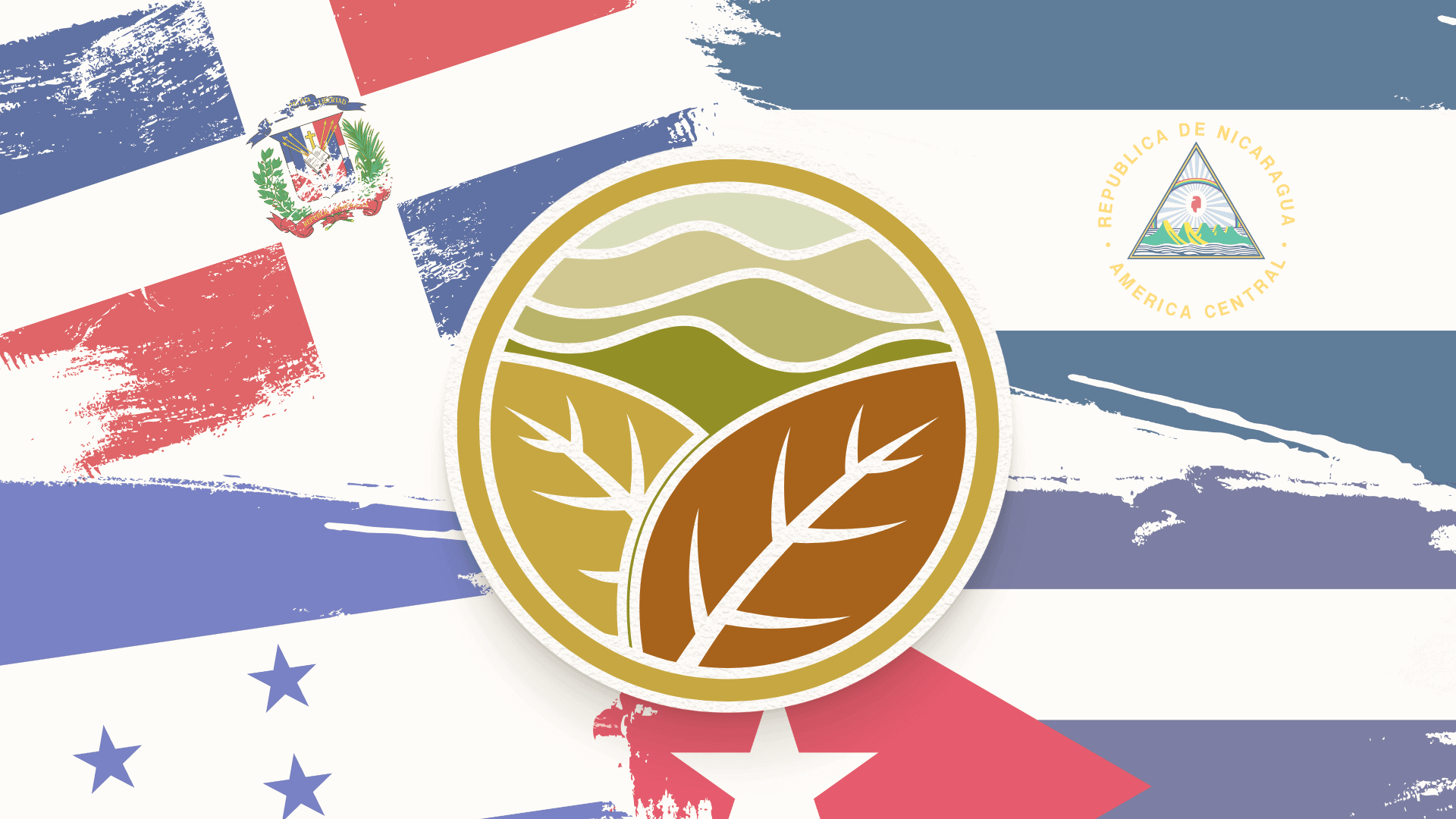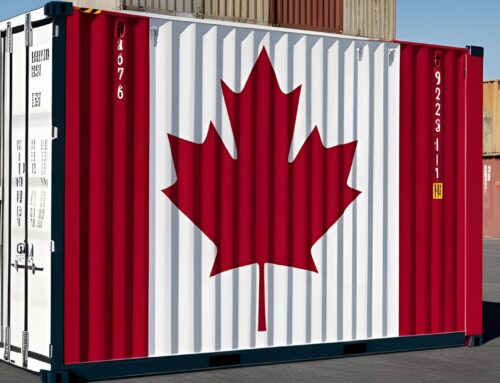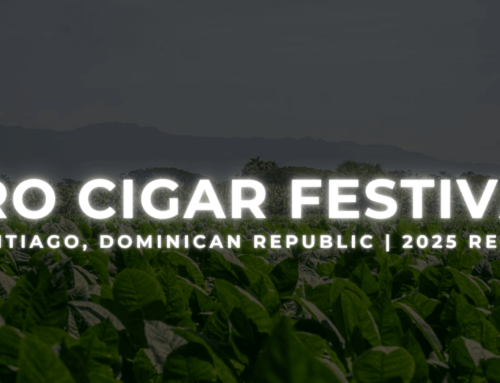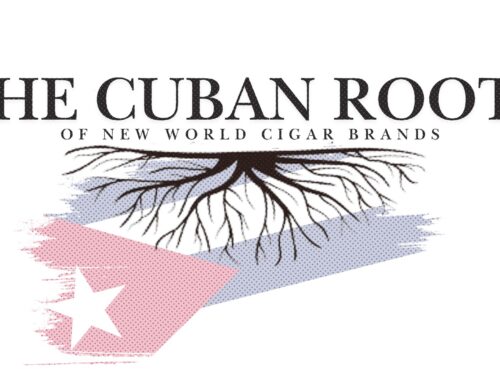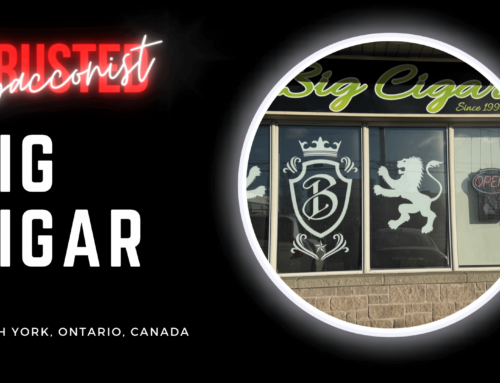Four locations, which respectively comprise the primary growing regions for the cigar-producing nations of the Dominican Republic, Cuba, Nicaragua, and Honduras, cultivate elite-quality tobacco that is used to make the finest cigars in the world.
Though tobacco is grown in many regions around the world, its primary growing region lies between the Tropic of Cancer (23.5˚ North of the Equator) and the Tropic of Capricorn (23.5˚ South of the Equator). Within this swath of the globe, 4 of the most renown locations for the cultivation of cigar tobacco are situated in the Dominican Republic, Cuba, Nicaragua, and Honduras.
Each region has a unique set of environmental conditions that make it ideal for producing cigar tobacco of the utmost quality.

Within these countries, the best growing regions for cigar tobacco are typically situated in a relatively flat valley area that is surrounded by hills or mountains. They generally feature rich, open-grained, deep soil that is well supplied with organic matter and abundant humidity. Such factors create the ideal soil composition that is conducive for premium tobacco leaf production.
In this piece, we’ll examine the Cibao Valley, Pinar del Rio, Esteli, and the Jamastran Valley which are the primary growing regions for the cigar-producing nations of the Dominican Republic, Cuba, Nicaragua, and Honduras.
DOMINICAN REPUBLIC: Cibao Valley
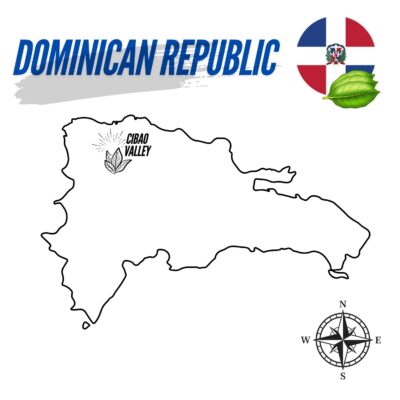
Nestled in the northern part of the Dominican Republic, you’ll find the Cibao Valley. Recognized as one of the most fertile and productive agricultural regions across the Caribbean, tobacco cultivation in the Cibao Valley dates back to the early Spanish colonial period, when settlers first identified the region’s potential for growing the valuable crop. Over the centuries, the valley has evolved into a pivotal area for premium tobacco production, becoming a major force in the Dominican Republic’s economy and cultural identity as a whole.
Climate
The Cibao Valley boasts a tropical rainforest climate that is characterized by consistent temperatures, abundant rainfall, and super rich, loamy soils. Together, these conditions create an ideal environment for growing high-quality tobacco that that skilled manufacturers use to to make world-class cigars.
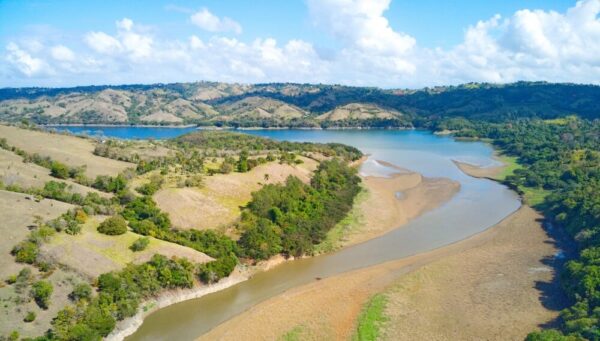
The Yaque del Norte river feeds the Cibao Valley with an abundance of nutrients
Climate Features:
- Temperature: The valley maintains an average temperature range of 22°C to 31°C (73°F to 88°F) throughout the year, providing a favorable and stable growing environment for tobacco.
- Rainfall: The region receives ample annual rainfall, averaging between 50 to 70 inches, which supports lush vegetation and fertile soil.
- Soil Composition: The Cibao Valley’s soil is rich in nutrients, thanks to volcanic activity and deposits from nearby rivers like the Yaque de Norte and the Yuna. This fertile landscape allows tobacco plants to develop highly complex flavors and aromas.
Notable Cigars that Feature Cibao Valley Tobacco

-
Arturo Fuente OpusX: Nestled in the Cibao Valley lies Chateau de la Fuente, home to one of the most sought-after cigars of our time, the coveted Fuente Fuente OpusX.
-
La Galera 1936 Box-Pressed: A masterpiece encompassed with a collection of the finest and most brilliantly rich tobaccos from the the Tabacalera Palma farms in La Canela within the Cibao Valley.
-
La Aurora 120th Anniversary Edition: A new, innovative approach at the historic La Aurora factory in Santiago, the Dominican Republic has culminated in a Dominican puro cigar that is 120 years in the making.
Tobacco from the Cibao Valley is prized for its smoothness, richness, and complexity, making it a popular choice for premium hand-made cigars. The valley produces several varieties of tobacco, which are used not only as filler and binder, but also as a wrapper leaf – a concept that essentially wasn’t pioneered until the 1990s through Arturo Fuente’s OpusX.
CUBA: Pinar del Río
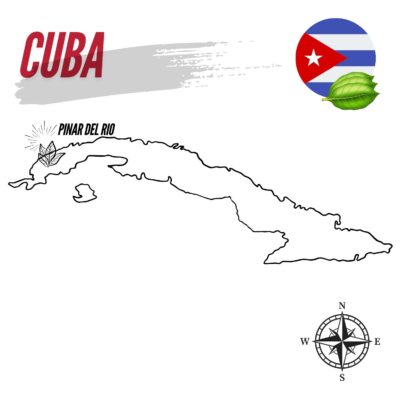
Pinar del Río is the westernmost province of Cuba, and to many it is synonymous with the cultivation of the world’s finest tobacco. The area’s rich soil and favorable climate quickly earned it a reputation for producing super high-quality tobacco leaves, which became a cornerstone of Cuba’s economy.
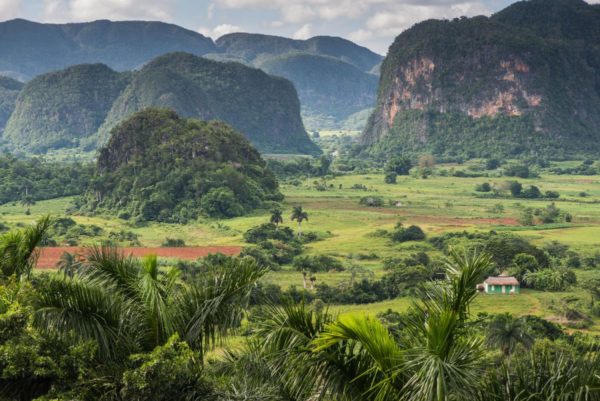
The Vuelta Abajo within Pinar del Rio
The region truly rose to prominence in the 19th century when it became a global hub for the production of premium, hand-made cigars. The term “Vuelta Abajo”, which refers to a specific zone of Pinar del Río, is considered by many aficionados to be the precise geographical spot that signifies the world’s highest quality tobacco, bar none.
Climate
Pinar del Río’s climate makes it ideal for tobacco cultivation as it boasts a tropical climate with a distinct wet and dry season. The region’s moderate temperatures, coupled with its red, sandy, loamy soil, create perfect growing conditions for premium cigar tobacco.
Climatic Features:
-
Temperature: The average temperature in Pinar del Río ranges between 20°C to 30°C (68°F to 86°F ), which is ideal for the growth of tobacco plants.
-
Rainfall: The area receives ample rainfall during the wet season, ensuring that the tobacco plants have sufficient water to thrive, while the dry season allows for optimal harvesting conditions.
-
Humidity: The elevated humidity levels in the Pinar del Río region contribute to the development of the tobacco’s characteristic rich flavor and very favorable aroma.
Notable Cigars that Feature Pinar del Río Tobacco

-
Montecristo No. 2: One of the most celebrated Cuban cigars of all time, Montecristo’s perfectly balanced blends are created exclusively with select filler and binder leaves from the famed Vuelta Abajo zone, which is believed to be home of the finest tobacco in the world.
-
Cohiba Esplendidos: Probably the most well-known Cohiba vitola, due to its exceptional length. What sets Cohiba cigars apart is the meticulous attention to detail and the use of only the finest tobacco leaves from the Vuelta Abajo zone.
-
Hoyo de Monterrey Double Corona: A subtle, creamy cigar with layers of delicate nuances, the Hoyo de Monterrey Double Corona comprises a light strength, using tobacco from the Vuelta Abajo zone.
The unique combination of Pinar del Río’s climatic factors, along with the mineral-rich soil, results in tobacco leaves that are celebrated for their elasticity, texture, and extraordinarily complex flavor profiles.
NICARGUA: Estelí
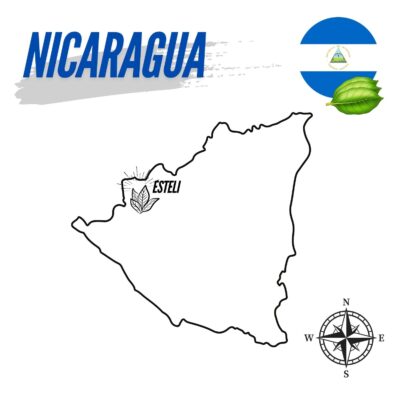
The city of Estelí, located in the northwestern part of Nicaragua, has earned a formidable reputation in the world of premium cigar production. This region’s rich history in tobacco cultivation stems from the time when Cuban immigrants, fleeing the Cuban Revolution in the 1950s, brought their knowledge and passion for tobacco farming to Nicaragua while in search of emulating “the Cuban taste”. Over the past 3 decades in particular, Estelí has erupted into a major hub for tobacco cultivation and cigar manufacturing, attracting connoisseurs and major brands alike.
Climate
Estelí enjoys a tropical savanna-like climate with a distinct dry season, which is crucial for tobacco farming. The dry season aids in the curing process of tobacco leaves, developing their flavor and aroma.
Nicaragua is known as “The Land of Lakes and Volcanoes”. It is home to over 25 volcanoes, some of which are still active.
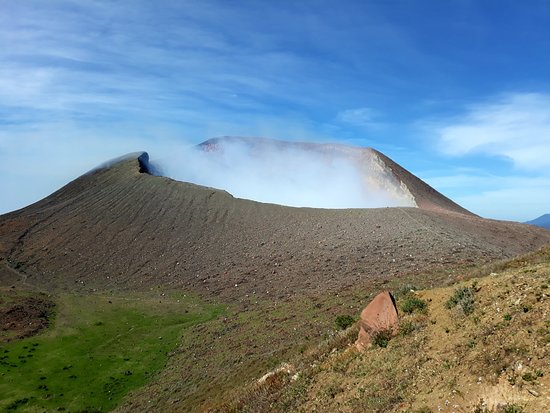
Nearby Telica Volcano is among several volcanoes of the Nicaragua front
As a result of the plethora of lakes and volcanoes, the volcanic soil in Estelí is rich in minerals and nutrients. It retains moisture well, ensuring that the tobacco plants receive adequate hydration, which is paramount to the cultivation of spectacular tobacco.
Climatic Features:
- Temperature: The average temperature ranges from 20°C to 30°C (68°F to 86°F), ideal for growing robust tobacco plants.
-
Rainfall: The region receives ample rainfall during the wet season, which supports the growth of lush, healthy tobacco plants.
-
Humidity: Estelí is situated at a very high elevation – around 800 meters above sea level – which contributes to the unique characteristics of its tobacco leaves. The altitude results in cooler nights, which slows the maturation process and allows the tobacco leaves some additional time to develop a greater complexity of flavor.
Notable Cigars that Feature Estelí Tobacco

- Oliva Serie V Melanio: This highly acclaimed 2014 #1 Cigar of the Year utilizes Estelí-grown tobacco, delivering a robust and flavorful smoking experience with abundant notes of coffee and chocolate.
- My Father Le Bijou 1922 Box-Pressed Torpedo: The 2015 #1 Cigar of the Year is a rich, full-bodied treat. Featuring a Habano Oscuro wrapper and the perfect mix of Nicaraguan long-fillers, Le Bijou 1922 exudes a robust array of complex flavors delivered in a remarkably smooth, satisfying fashion.
- Joya de Nicaragua Clásico: Joya de Nicaragua Clásico is the very first Puro exported from Nicaragua, and for a long time the only cigar in the Joya de Nicaragua portfolio. To add to its rich history, during the Cuban embargo it was the only brand to have been recognized by the US government as the official cigar of the White House.
The tobacco grown in Estelí is renowned for its bold flavors, peppery notes and rich aromas, making it a current favorite among premium cigar manufacturers. Countless well-known cigars feature tobacco from this illustrious Nicaraguan growing region.
HONDURAS: Jamastran Valley
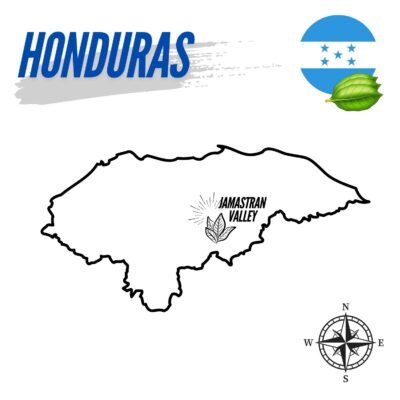
The Jamastran Valley is located in southern Honduras, is an esteemed region with a tobacco-growing legacy that dates back to the early 20th century when it first attracted attention for its potential to produce high-quality tobacco. Over the decades, the valley has gained a stellar reputation for its unique, bold tobacco, becoming yet another central hub for the producing premium hand-made cigars. This reputation is built on generations of expertise, much of which was brought from Cuban immigrants who fled the Castro regime, as well as a commitment to maintaining traditional methodolgy while embracing innovation.
Climate
Similar to the other regions, the Jamastran Valley features a tropical climate with distinct wet and dry seasons, which is ideal for the growth of robust, healthy tobacco plants.
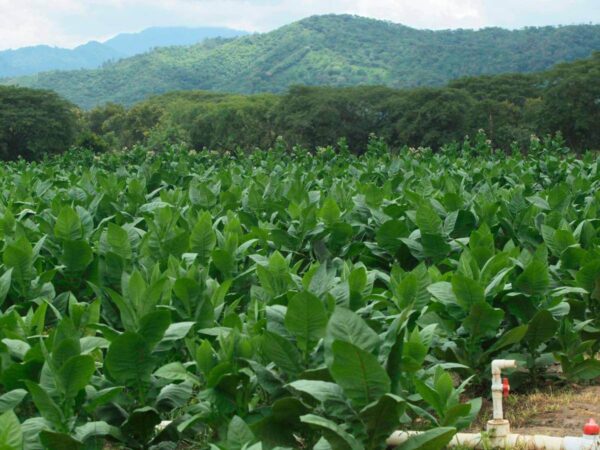
A snapshot of tobaco plants growing in Honduras’ Jamastran Valley
The valley’s fertile soil, enriched by the nutrient-rich deposits from nearby rivers such as the Hato, provides the perfect foundation for cultivating tobacco leaves with deep flavors and rich aromas. Located near the municipality of El Paraiso (“The Paradise”) and the Nicaraguan border, the Jamastran Valley is perfectly situated for growing Corojo and Connecticut shade-grown wrappers and sun-grown fillers.
Climatic Features:
- Temperature: The valley maintains a warm temperature year-round, with averages ranging between 21°C and 29°C (70°F and 85°F). This consistent warmth helps in the steady growth of tobacco plants.
-
Rainfall: The annual rainfall in the Jamastran Valley is moderate, allowing for a well-balanced moisture level that is crucial for tobacco cultivation.
-
Altitude: Positioned at a relatively high altitude, the valley benefits from a unique microclimate that enhances the tobacco’s characteristics, imparting a distinctively rich and balanced flavor profile.
Notable Cigars that Feature Jamastran Valley Tobacco

- Alec Bradley Prensado: This line, which enjoyed a #1 Cigar of the Year accolade in 2011, is celebrated for its rich flavor profile, with a distinctive sweetness and spice that can be attributed to the Jamastran Valley’s tobacco.
- Punch Robusto: A medium-full cigar with a Corojo wrapper grown in the Jamastran Valley, the Punch Robusto delivers notes of caramel, coffee beans, and leather. The finish is complex, robust and spicy.
- Camacho Triple Maduro: Known for their bold flavors and full-bodied smokes, Camacho’s cigars like the Triple Maduro often feature Jamastran Valley-grown tobacco, which adds serious depth and complexity to their blends.
The combination of the valley’s climate, soil, and high altitude creates an environment with an incredible ability to nurture tobacco plants. The leaves harvested in the valley are known for their robust flavors, excellent burn quality, and complex aroma profiles, making them highly sought after by premium cigar manufacturers and aficionados alike. Many renowned cigar brands capitalize on the superior quality of Jamastran Valley tobacco to produce exceptional cigars.
Summary
When it comes to producing premium cigar tobacco, there are many places beyond these 4 aforementioned regions that are contributing to the creation of today’s top cigar options in a very powerful way. Exquisite tobacco from locations such as Mexico, Cameroon, and Indonesia – just to mention a few – are certainly worthy of every aficionado’s attention and praise.
However, it is these 4 regions, all situated within the Caribbean, that are generally considered to be leading the charge. They are all tropical, have distinct wet and dry seasons, are being fed with a steady stream of nutrients delivered from nearby rivers and lakes, and characteristically feature a reddish-brown, fine-grain, loamy soil composition.
Of course, each region has its differences, which ultimately results in a wonderfully diverse array of flavor options.
For the modern cigar lover, the choices have never been better.
